How to Quarantine
The purpose of this article is to present an argument for quarantining saltwater fish, and then show the reader how to setup a Quarantine Tank (QT) and discuss quarantine protocols.
Why quarantine? Setting up a QT does not have to be expensive or complicated. The saying “simple is better” applies here. So, let’s first list the reasons why you should quarantine:
- In addition to being able to treat a new fish for diseases, you are protecting your “core group” of fish in the Display Tank (DT) from being infected since most fish diseases are transmissible. This group of fish may be worth hundreds, if not thousands, of dollars. Most medications (that actually work) ARE NOT reef safe.
- Some diseases cannot be “managed” as ich sometimes is. Velvet (which is often mistaken for ich) can wipe out your entire fish population in less than 72 hours. Whereas flukes kills fish 1 or 2 at a time, over a period of several months.
- Experiencing a “wipe out” often leads to a quick exit from the hobby. It can be a beginner just getting started, or even an experienced reefer who just can’t take it anymore. I have seen many great DIYers and coral experts walk away from this hobby because one disease after another afflicted their fish. When this happens we all lose out as friendships made sometimes fade, and that person’s contributions made to the hobby suddenly cease.
- We all know (or will learn) that things can suddenly spiral out of control in the DT. It’s a risk we all take. Having a fish QT (or frag tank for corals) can serve as temporary housing in case a toxin contaminates your main display; or a fish fight breaks out and one fish is badly injured.
- By utilizing a QT, you are able to match the salinity (SG) of the water from which a new fish came. Many LFS & online places keep their fish in low SG. Knowing what their SG is beforehand allows you to “float & release” as opposed to drip acclimation which can damage a fish if ammonia builds up and/or the SG is raised too quickly.
- It’s too “stressful” on the fish. Let’s stop and think about this. You’re a fish. You just travelled thousands of miles, spending time in various tanks with poor water quality. So poor, in fact, that an estimated 70-90% of the other fish didn’t make it. You’ve also been exposed to countless pathogens and may have not eaten for days or even weeks. So, which seems like the least stressful option to you? Dumped in a DT, filled with other fish less than thrilled about your arrival, with whom you must immediately compete for food and territory. Or would you prefer a tank of your very own; so you can rest, eat without competition and be strengthened before joining the DT.
- I can’t afford a QT, and/or I don’t have room for one. I usually hear this from folks who buy $100 coral frags and have aquarium equipment all over their house.
A QT need not be expensive. Many times you can buy everything you need second-hand for a fraction of what it costs new. A 10 gallon QT can often be setup for under $50.
- You can’t QT sensitive fish. There’s always a workaround if you just look for it. Need to QT a sand burrowing wrasse? Take a glass Pyrex bowl and put a small amount of sand in it. Need to QT a pod eating mandarin? Most will eat Nutramar ova or some other suitable alternative.
- Fish are exposed to diseases in the ocean, that’s where the diseases come from! Yes, that’s true. However, there are also about a gazillion gallons of water diluting those diseases from the fish. A healthy immune system can keep up with that. In our relatively small aquariums, fish are often overwhelmed by a much higher concentration of parasites, worms and harmful bacteria.
- Aquarium (10-30 gallons seems to work for most people. Bigger QT lets you house more fish and gives you more wiggle room when it comes to ammonia. Smaller QT is cheaper, easier to maintain and can be setup/broke down quickly.)
- Heater/thermometer
- Small powerhead or air pump/air stone, for circulation & gas exchange.
- Freshly mixed saltwater which has been fully dissolved and circulating for at least 24 hours. Alternatively, you can use DT water to fill your QT so long as you are confident that your display tank is disease-free. Do not siphon near the bottom of your DT, to prevent detritus from being transferred to the QT.
- Light (can just be a simple, one bulb fixture)
- Hang on the back (HOB) power filter, where carbon or even a “seeded” sponge (explained later) can be added
- Egg crate (used on lighting panels), which can easily be cut with snips to build a custom top to prevent fish from jumping
- PVC elbows (see pic below) used as “caves” in which the fish hide
- Seachem Ammonia Alert badge (see pic below)
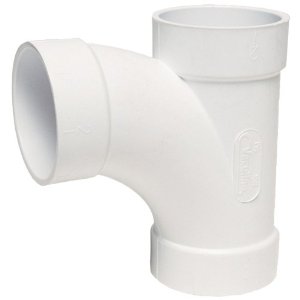
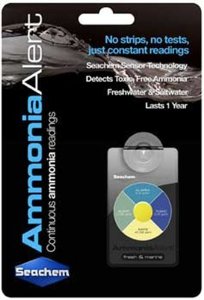
Substrate and rock are best avoided in QT, as those can absorb many medications. However, one or two small pieces of live rock may be added for ammonia control, so long as they are coming from a disease free tank. The live rock will need to be removed once a disease is spotted and before medications are used. Furthermore, the live rock must be considered “contaminated” once exposed to a fish disease, and left in a fallow (fish free) environment for 72 days to starve out any parasites. Or alternatively, sterilize it using a mild bleach solution; after a thorough rinsing & drying period, it can be reused as “dry rock.”
Ammonia control: Toxic ammonia, caused by fish urine/poop and uneaten food, needs to be closely monitored in QT. You can use a test kit (so long as no medications are present) or a Seachem Ammonia Alert badge (works even in the presence of medications). Even the smallest traces of ammonia are toxic! Therefore, anything other than a “0” reading necessitates immediate action! You can perform a water change to reduce ammonia; or alternatively, use an ammonia reducer such as Amquel or Prime (so long as no medications are present).
The use of “seeded” bio-media can help to break down ammonia. I personally use an Aquaclear HOB power filter, utilizing the “foam insert” i.e. sponge it comes with. I “seed” the sponge (or multiples) in a high flow area of my DT’s sump (or you can put it behind your rocks) for at least one month prior to QT. This one month allows time for enough beneficial bacteria to transfer onto the sponge, so that it may be used as biological filtration once placed back in the power filter and used in QT. An alternative (albeit expensive) way to instantly seed your sponge is to pour some Bio-Spira, Seachem Stability or Dr Tim's Nitrifying Bacteria over it just prior to use. Below is a pic of the Aquaclear HOB power filter and correlating “foam” sponge (you can buy additional sponges cheaply):
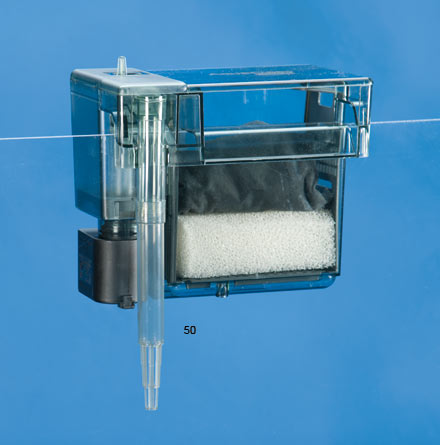
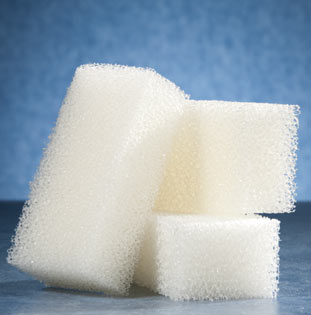
Immediately following this article, I will post several photos of my own personal QT, so that you may have a visual reference to go by. I recommend putting your QT at least 10 feet away from any other saltwater aquarium to prevent disease transmission via aerosol (discussed in more detail here: http://www.reef2reef.com/forums/fish-disease-treatment-diagnosis/190292-aerosol-transmission.html).
Quarantine Protocols - How many fish to QT at one time should be decided by a number of factors: size QT, size of fish, compatibility/aggressiveness of fish you are mixing, etc. If it feels like “too many” then it probably is. Every fish you add produces more ammonia. While adding multiple PVC “caves” will sometimes alleviate aggression, this is not always the case.
Once your fish are in QT, you must decide whether to prophylactically treat or just observe. This is a much debated topic. Personally, I feel it all comes down to knowing what type of person you are and how much free time you have to watch your fish in QT. If you are the observant, attention to detail type and have lots of time to watch the fish, then just observing may work best for you. All but two diseases - ich and flukes - will usually show themselves with visible symptoms within 1 month of QT. Ich may or may not have visible symptoms (white “sprinkles” on the fish), and flukes rarely are seen unless the fish is afflicted by Neobenedenia or badly infected (with cloudy eyes). However, both will usually have behavioral symptoms such as scratching, flashing, twitching and heavy breathing. Prophylactic treatment is a wise course for those with hectic schedules or not overly observant. It involves just treating for ich & flukes, whether or not the fish actually have them. Available treatment options for both diseases can be found here: http://www.reef2reef.com/forums/fish-disease-treatment-diagnosis/189284-fish-diseases-101-a.html
A fish should be left in QT for a minimum of one month. Longer is always better, but one month allows enough time for most diseases to show themselves; although remember ich & flukes may only have subtle, but not visible, symptoms (as outlined above). Since I prophylactically treat, my fish spend between 4 and 6 weeks in QT dependent upon which “option” I choose. I have never seen a disease in my DT since adopting one of these two protocols:
Option A - Fish is floated in the bag for 20-30 minutes (to temp acclimate) and then released into QT with matching SG. I give the fish a few days to recuperate and try to get him eating. Once he’s eaten for two consecutive days, I begin Prazipro treatment - dose once, wait 5-7 days, do a 20-25% water change and then repeat dosage. Five days later I do another 20-25% water change and run activated carbon for 24 hours. After removing the carbon, I begin either Chloroquine phosphate or copper treatment for 30 days. After that, the fish should be ready for the DT - so long as he’s eating, looks healthy and isn’t displaying symptoms of any disease.
Don’t freak if the fish stops eating when you first begin any chemical treatment. Prazi only remains active for 72 hours anyway, but prolonged appetite suppression (3-4 days) from other medications should result in discontinuing treatment.
OR
Option B - Fish is floated in the bag for 20-30 minutes (to temp acclimate) and then released into QT with matching SG. “Option B” is tank transfer method, as outlined here: Tank Transfer Method
Prazipro is dosed at the onset of “Day 4” and “Day 10” transfers; transfers 2 & 4 respectively. After tank transfer is complete, the fish is observed for an additional 2 weeks to watch for symptoms of other diseases. If the fish is eating well, looks healthy and isn’t displaying symptoms of any disease… he gets to go into my DT.
I use “Option A” mostly for larger fish; “Option B” for smaller ones. “Option B” does get the fish in your DT 2 weeks sooner, but it’s also a lot more work. If the fish arrives in low SG, as the water evaporates, just top off the QT with saltwater (instead of freshwater) until it matches your DT. So long as SG & temperature match, you can just add the fish to your DT without doing any acclimation procedure.
Don’t hesitate to make changes to your treatment plan as needed! For example, if a fish you were about to begin Prazipro on suddenly shows symptoms of ich - treat that first and do Prazi later. Or if you are doing tank transfer method, but suspect the fish might have velvet - immediately begin chloroquine phosphate or copper treatment! (Other medications, such as Prazipro or antibiotics, can be used in conjunction with tank transfer.)
Coral/Invert QT - Although unlikely, it is possible to bring in a fish disease on a coral or invert. While none of these can actually “host” the way a fish can, certain diseases can hitchhike their way into your DT. We’ll use ich as an example. Ich has both a cyst (tomonts) stage and a free swimming (theronts) stage of its life cycle. The free swimmers can be found in any droplet of water from an infected tank, so care must be taken when dealing with anything wet. This also applies to wet hands, for example, going from QT to DT. One way to prevent free swimmers from cross contaminating your DT is to gently pour DT water over the coral/invert (and into a bucket) before placing the coral/invert into your tank. The bucket water should then be discarded. In theory, this simple process should “wash away” any theronts and prevent them from entering your DT.
Unfortunately, dealing with cysts is a lot more complicated. Tomonts encyst upon surfaces - rocks, coral plugs, shells of snails/hermit crabs, etc. Coral dips probably do not eradicate these. Therefore, the only way to be completely safe is to QT all corals/inverts in a fishless frag tank (or nano reef) for 72 days (same as going fallow). This will allow enough time for the parasite or worm to go through its entire life cycle, and essentially starve to death without a fish host to feed on. I understand many will scoff at the “72 days” and quite frankly, I don’t blame you. It does seem pretty ridiculous to me, as well. But facts are facts, and I guess each of us must decide for ourselves just how much risk we are willing to tolerate. If it’s any consolation, the 72 days is also useful to watch for flatworms, red bugs and other “coral diseases” before they can enter your DT. But that’s entirely a subject for another article…
Below are pics of my 29 gallon QT.
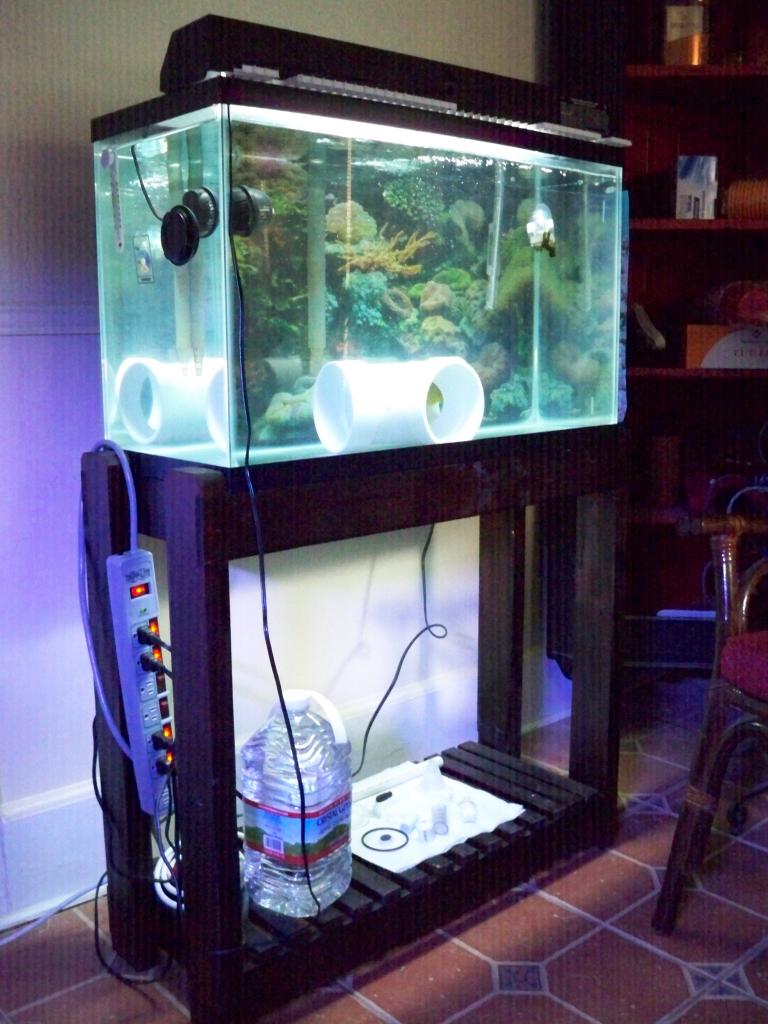
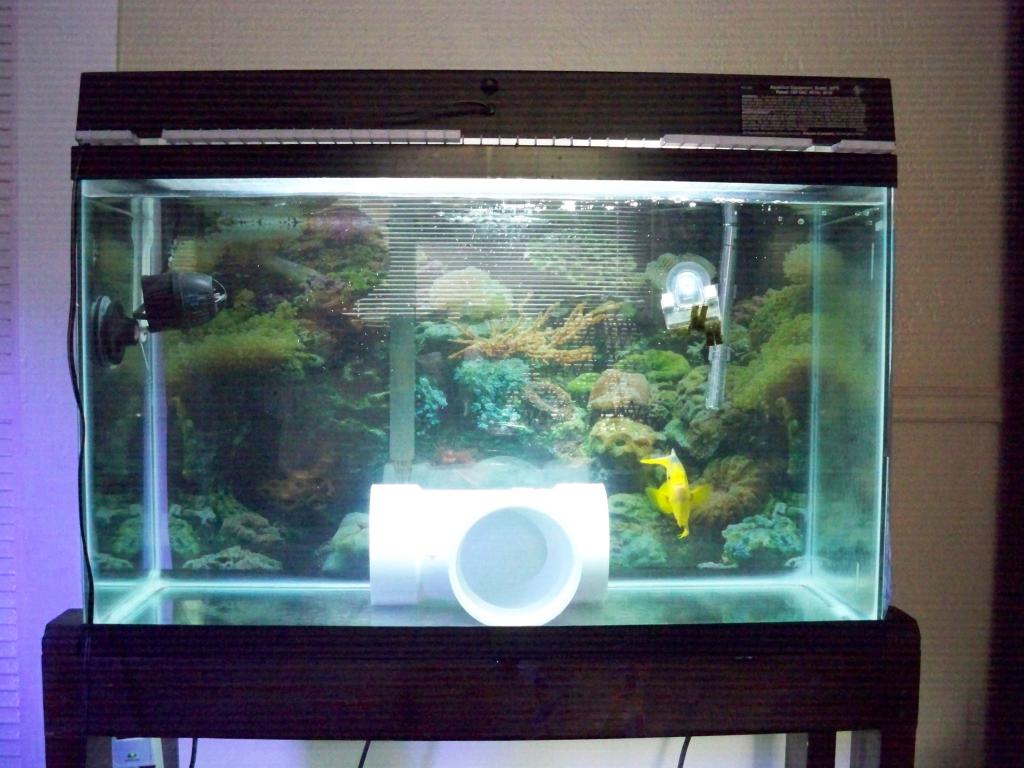
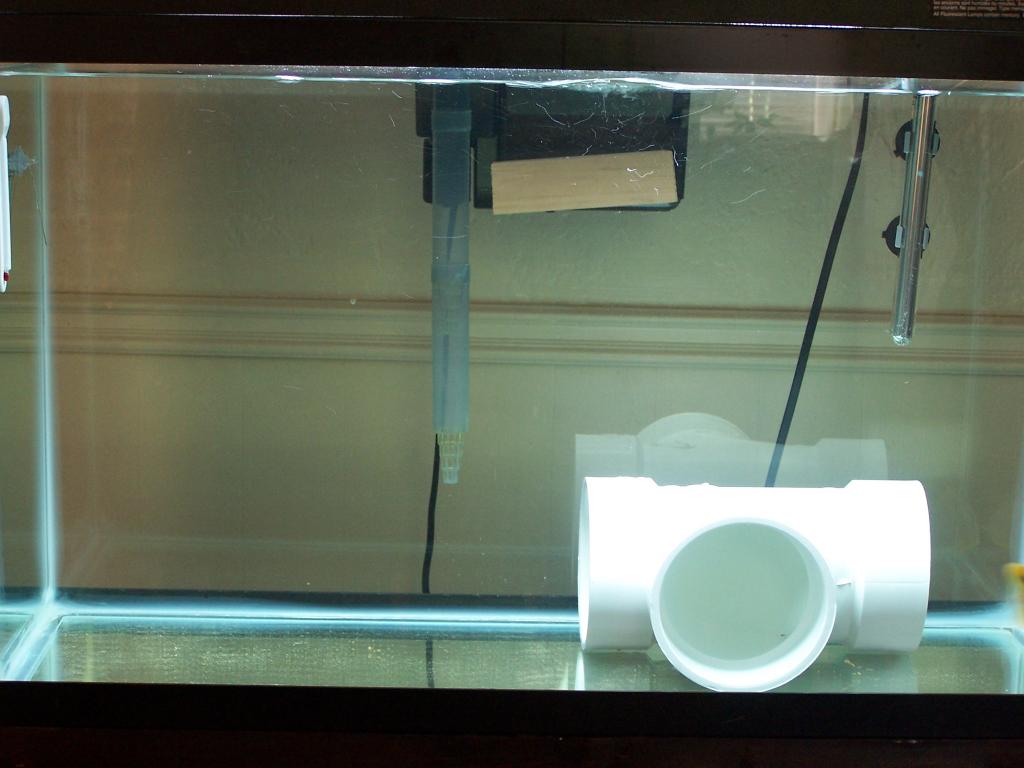
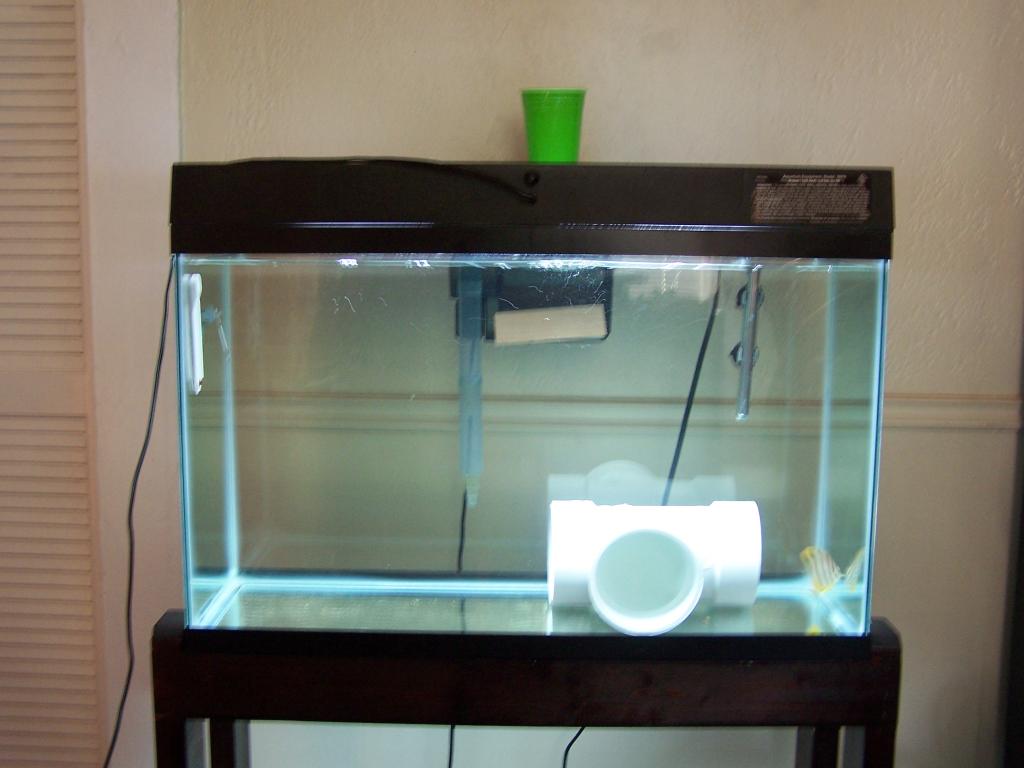
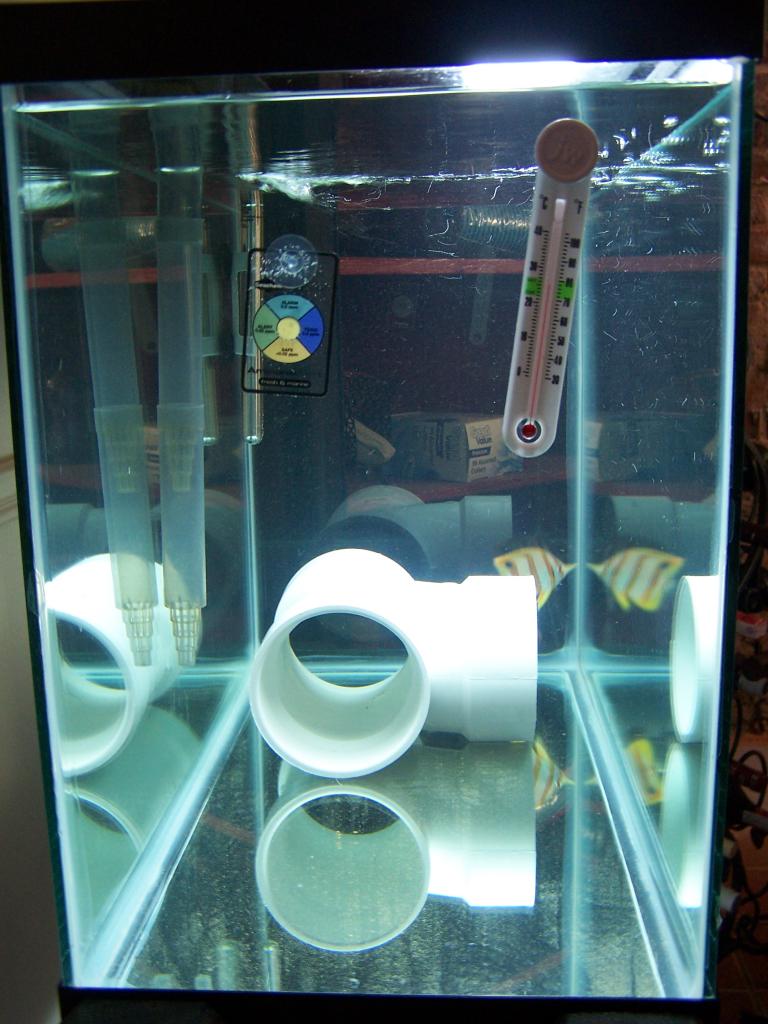
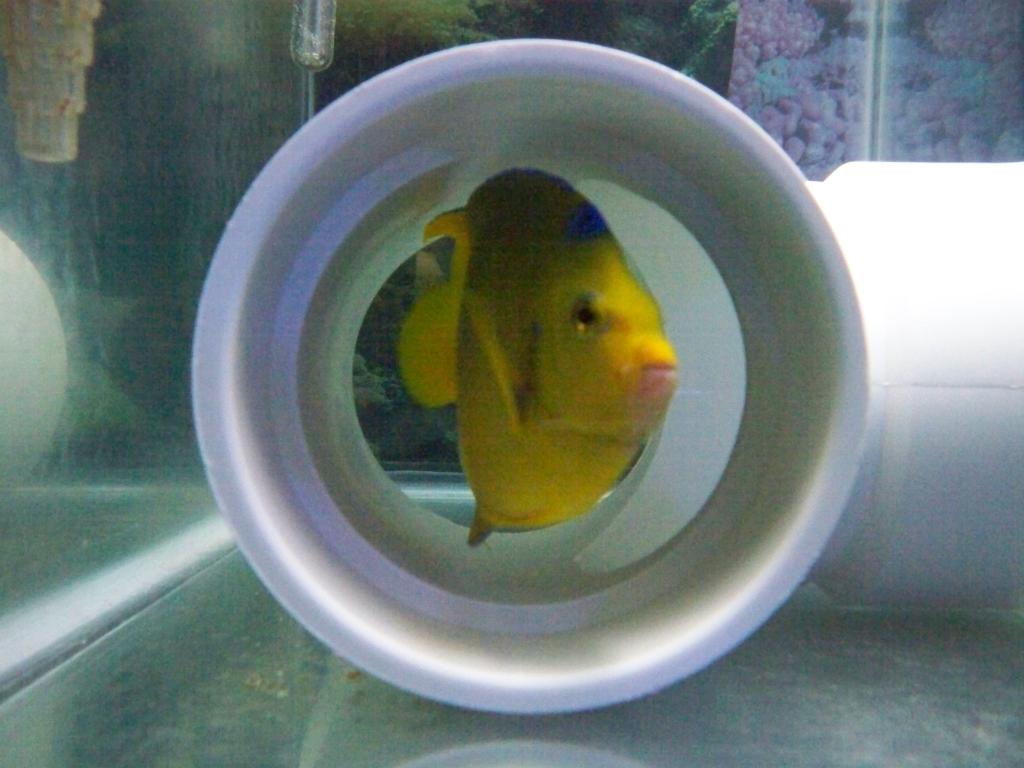
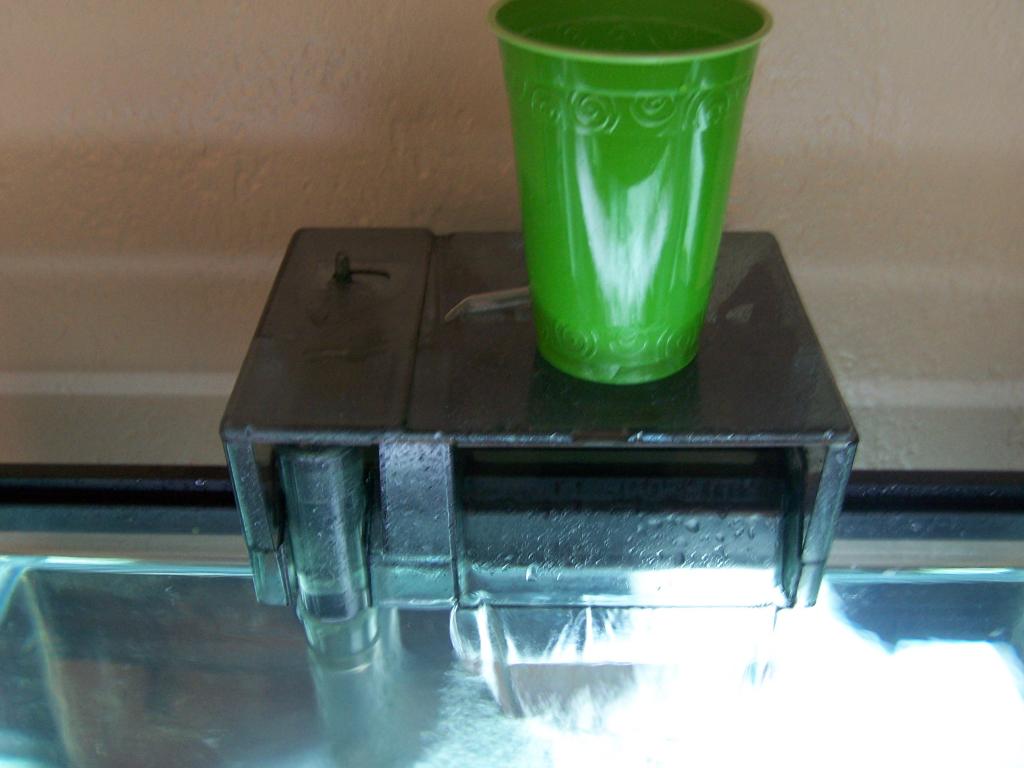
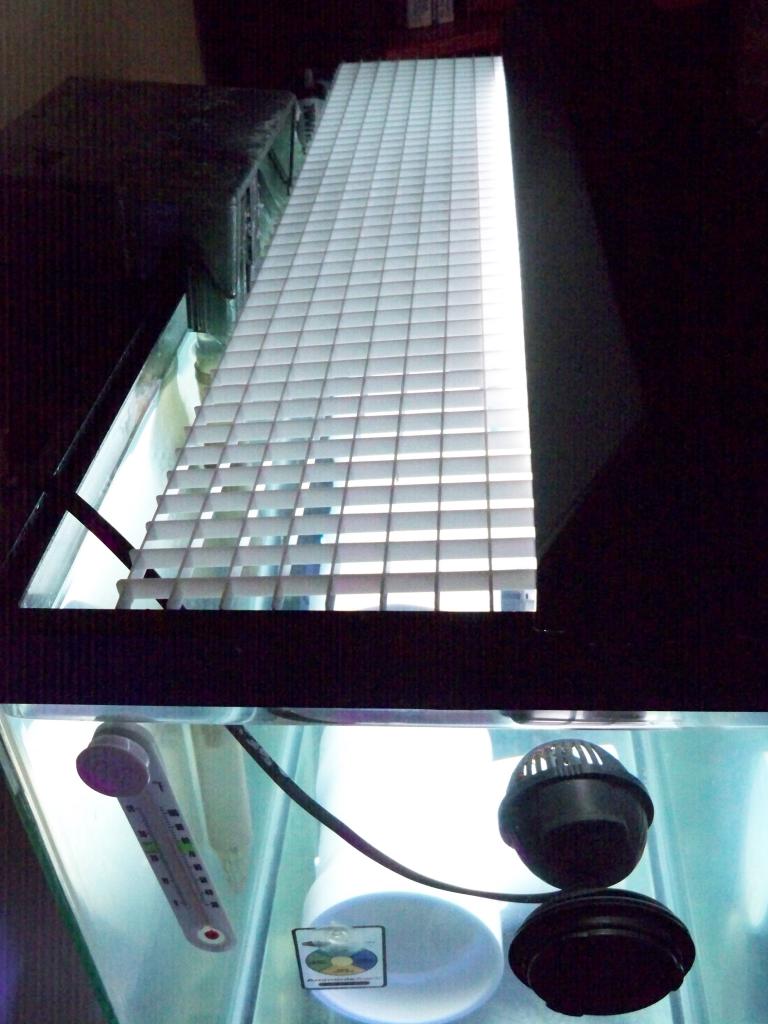
My 29 gal "fishless" frag tank. I place all corals/inverts in here for 76 days before they go into my DT. Just cheap T5 lighting, Koralia powerhead, HOB powerfilter, heater, rock/sand and a frag rack gets the job done.
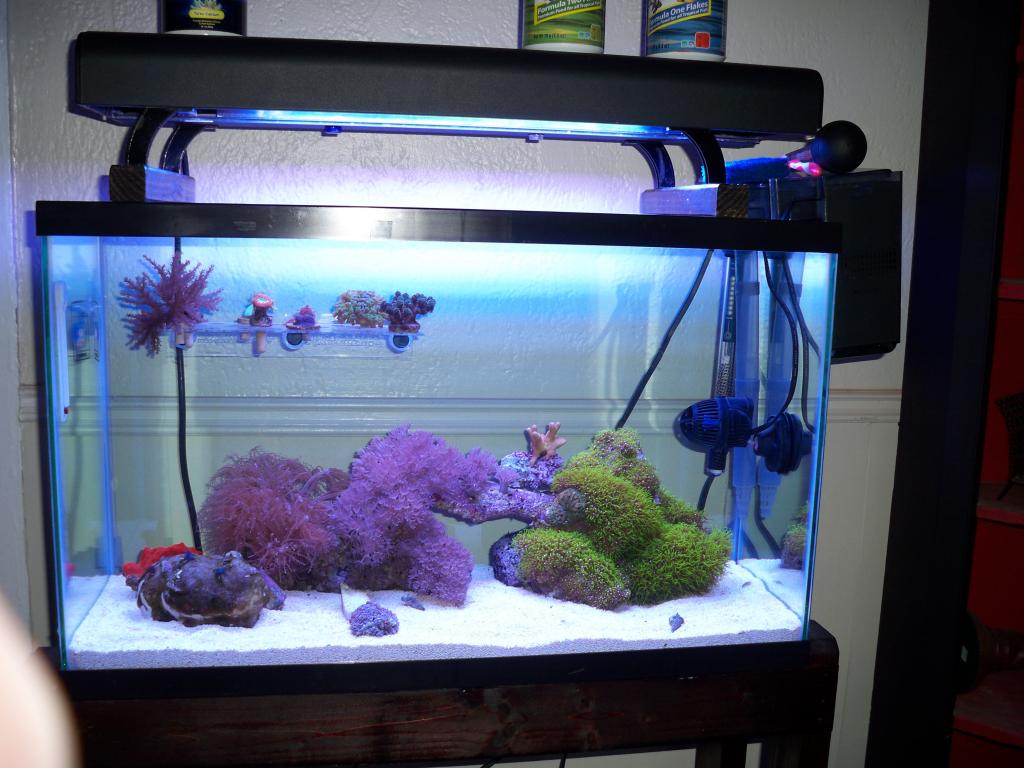
More recent pic of my frag tank I use to QT:













